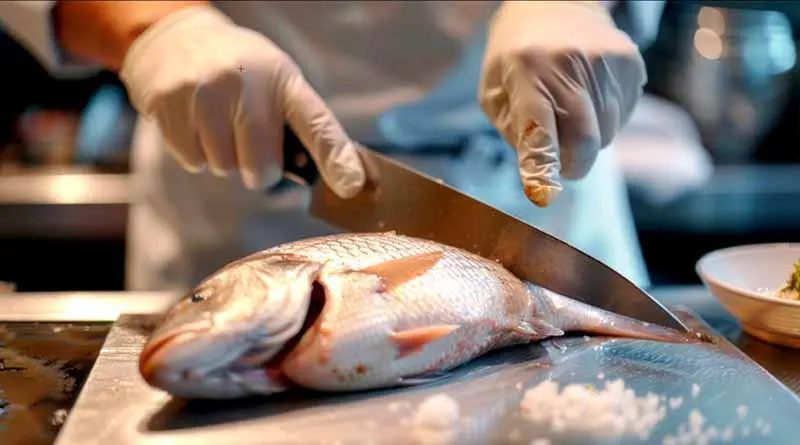
How Do I Clean and Fillet a Fish?
Prepping the catch
There I was, by the calm, endless expanse of the lake, the sun sinking low, casting long shadows over the water, and the catch of the day in my bucket. As the chill of the evening air brushed against my face, a fundamental question arose in the mind of every angler who takes pride in their catch: “How do I clean and fillet a fish?” This isn’t just about preparing a fish for cooking—it’s an art form, a way to honor the catch by maximizing its value and taste.
Understanding the Process
Cleaning and filleting a fish is an art that goes beyond mere cutting. It requires a deep understanding of the fish’s anatomy, respect for the fresh catch, and meticulous precision to ensure that every slice maximizes the yield and preserves the quality of the meat. This task, though technical and intricate, connects the angler not only to the catch but also to a time-honored culinary tradition.
Necessary Skills
The skills needed to effectively clean and fillet a fish include:
- Steady Hand: Precision is crucial, as each cut needs to be carefully placed to avoid damaging the meat and to ensure that fillets are clean and presentable.
- Anatomical Knowledge: Understanding where to cut involves knowing the fish’s structure, such as the location of bones, to efficiently separate the meat from the skeleton without leaving valuable flesh on the bones.
- Sensory Skills: Being able to feel the knife touch the bones without cutting through them is essential for clean filleting.
Tools Required
To achieve the best results in cleaning and filleting, specific tools are indispensable:
- Sharp Fillet Knife: A flexible, sharp knife is crucial as it makes precise cuts easier and helps in smoothly separating the meat from bones.
- Fish Scaler: This tool is used to remove scales effectively, ensuring the skin is clean and ready for cooking or further processing.
- Sturdy Cutting Board: A good cutting board provides a stable surface for cutting and helps prevent accidents.
Challenges of Cleaning and Filleting
Despite the necessary skills and tools, several challenges can arise during the cleaning and filleting process:
- Preserving Meat Quality: Making incorrect cuts not only wastes meat but can also affect the texture and appearance of the fillets, which is particularly important in culinary presentations.
- Health and Safety: The use of sharp knives and handling of raw fish pose risks of cuts and contamination. Proper handling techniques and kitchen hygiene are crucial to prevent these issues.
- Learning Curve: Mastering the skill of filleting efficiently takes time and practice. Each species of fish can present unique challenges due to differences in anatomy and size.
Best Approach to Cleaning and Filleting
Through refined practice and experience, here’s a streamlined process for cleaning and filleting:
Preparation
- Descale the Fish: Essential for a clean working surface, descaling should be done thoroughly. Using a scaler or the back of a knife blade, remove all scales by scraping against their grain under running water to minimize mess.
- Remove the Entrails: Carefully cut from the anus to the base of the gills on the underside of the fish to remove internal organs. Avoid puncturing the intestines to prevent contamination of the flesh with intestinal bacteria.
Filleting the Fish
- Initial Cut: Start just behind the pectoral fins and slice down to the backbone, then turn the knife to slice along the spine towards the tail, gently lifting away the fillet.
- Skin the Fillet: Place the fillet skin-side down. Start at the tail end, making a small cut to separate the skin from the meat, and pull the skin off with one hand while sliding the knife with the other.
Fine-Tuning
- Trimming: Check the fillets for any remaining bones or rib fragments and trim as needed.
- Rinsing: Rinse the fillets under cold water to remove any leftover scales, blood, or bones, ensuring the fillets are clean and ready for cooking or storage.
This comprehensive approach to cleaning and filleting fish not only enhances the culinary experience but also ensures that the integrity of the fish is maintained from catch to kitchen.
Tools and Resources Needed
To execute this task effectively, you’ll need a few essential tools:
- Sharp Fillet Knife: A flexible blade helps make precise cuts.
- Fish Scaler: This tool makes descaling quicker and less messy.
- Cutting Board: Preferably one dedicated to fish to avoid cross-contamination.
- Protective Gloves: These can help prevent slips and cuts.
As the day ended and my fillets lay clean and neat, ready for cooking, the satisfaction was palpable. Cleaning and filleting fish is not just about preparing a meal; it’s about respecting the catch, honoring the tradition of angling, and enjoying the fruits of one’s labor. Every slice of the knife, every careful cut, brings you closer to mastering an essential skill that turns a simple fish into a culinary delight. This process, steeped in tradition yet vital for any modern angler, connects us to generations of fishers worldwide who share the same respect for the water and its inhabitants.






